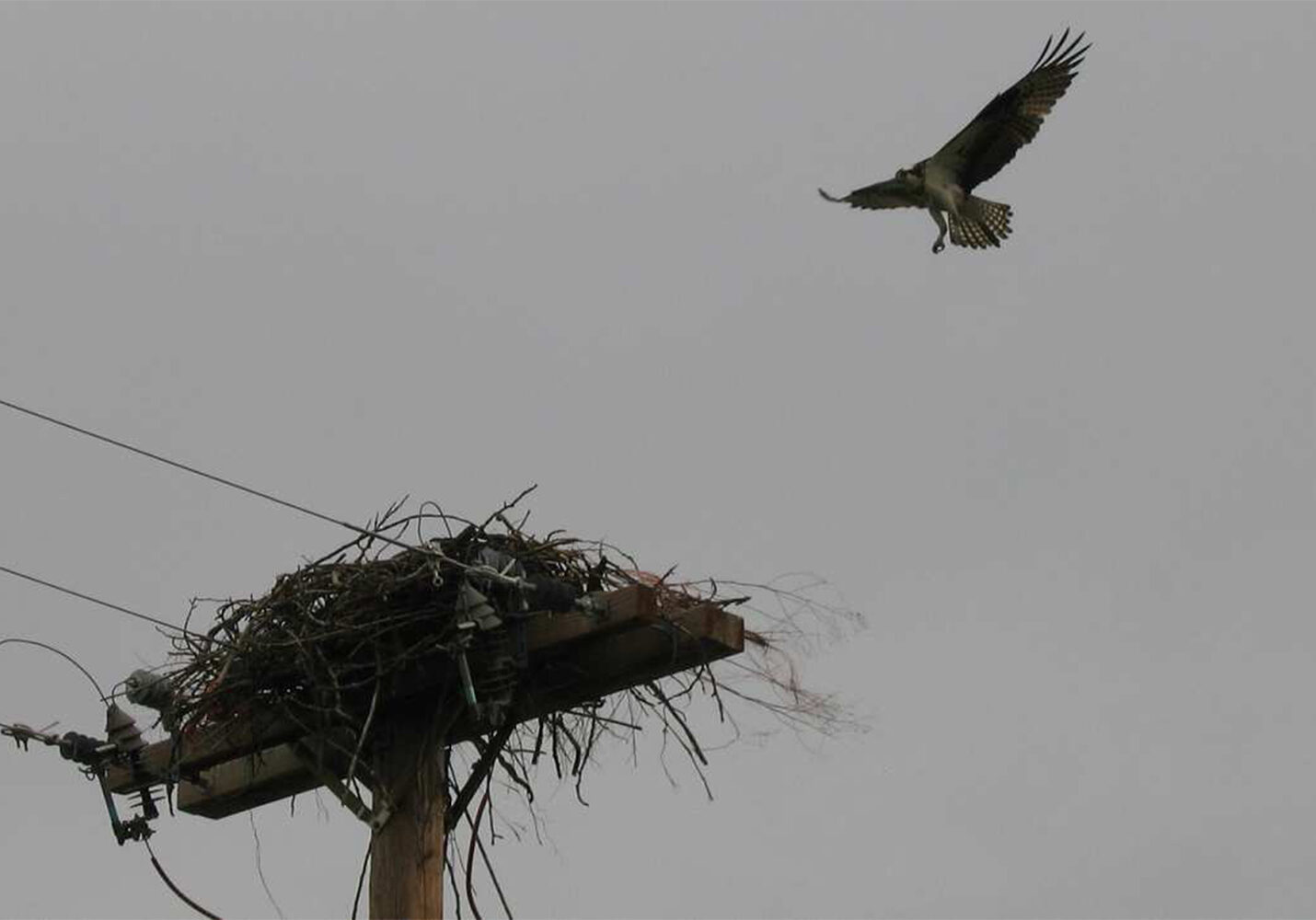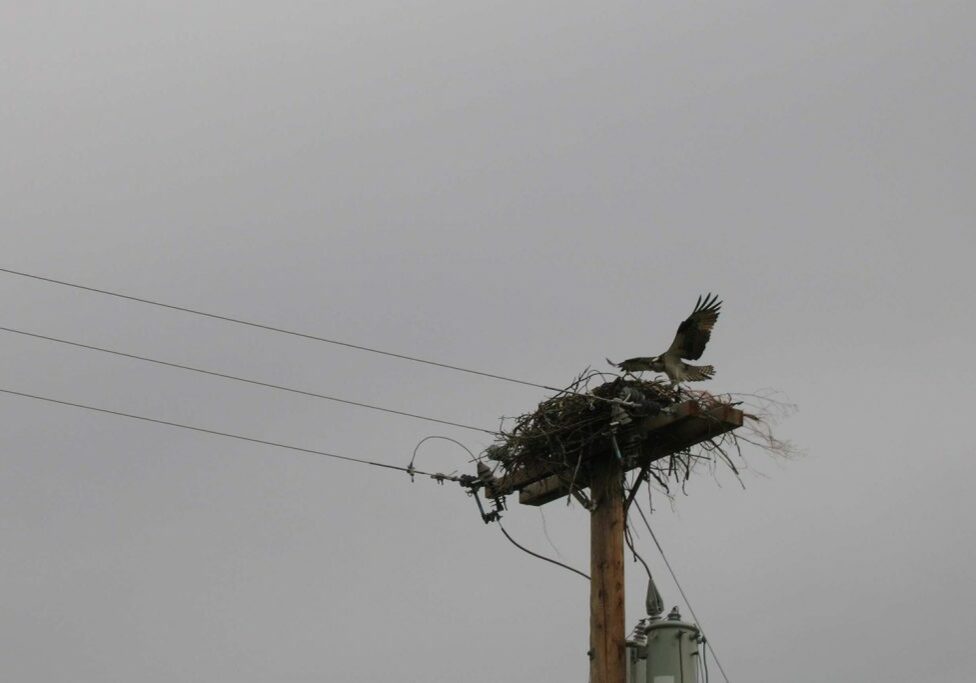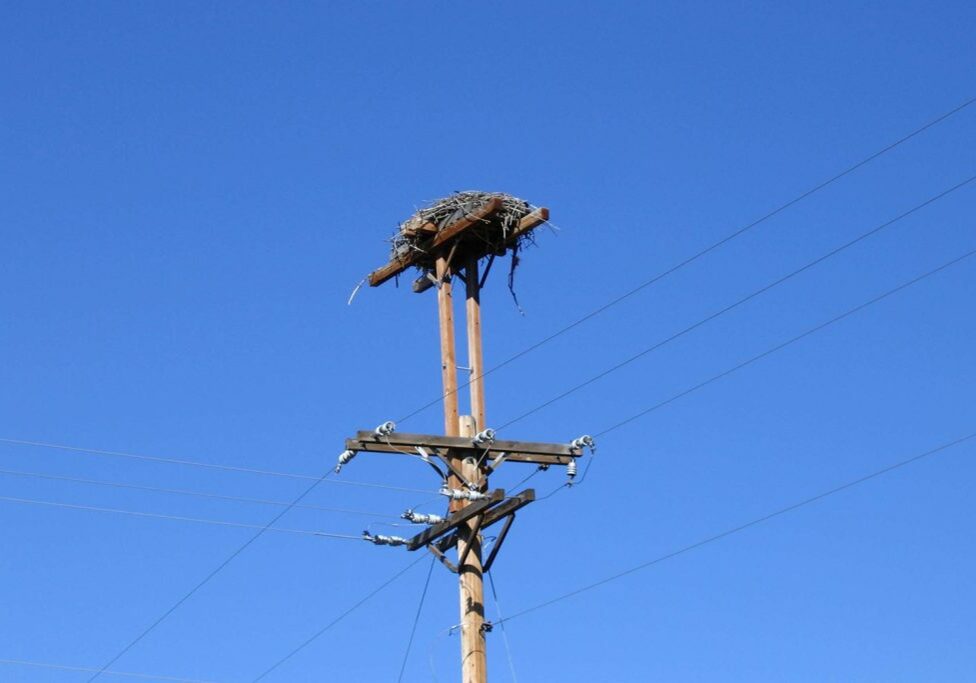Avian Protection Plan
To report a bird or other animal that may have come into contact with a power line, or a bird nest dangerously close to power lines, contact Benton REA's engineering department at 509-786-8252.
Many bird species are quite adaptable to the presence of man-made structures. Electrical facilities are no exception, and in some cases, such facilities attract bird use by providing perching and nesting structures. However, electrical structures can also pose a potential risk to birds through electrocution by exposure to energized wires and related devices.
Avian interactions with power lines also cause power outages, which represent added cost and inconvenience for Benton REA members.
Over 800 species of birds are protected by the Migratory Bird Treaty Act (MBTA). Additionally, Golden and Bald Eagles are protected under the Bald and Golden Eagle Protection Act. Bald Eagles are also protected by the Endangered Species Act. The US Fish and Wildlife Service (USFWS) enforces these federal laws.

Avian Protection Plan
Benton REA’s Avian Protection Plan is designed to protect and conserve migratory birds by attempting to reduce the risks that result from avian contact with Benton REA electric utility facilities. The plan has been designed to:
- Improve electrical reliability to Benton REA members
- Evaluate recorded avian fatalities as a result of contact with Benton REA facilities
- Address recorded avian contacts by implementing remedial power line construction improvements to reduce contacts in the Benton REA service territory
In general terms, Benton REA’s Aviation Protection Plan sets forth utility provisions for attempting to protect birds covered under the MBTA from electrocution and collisions resulting from contact with overhead power lines. Under this plan, Benton REA will:
- Document and report known avian injuries and fatalities that involves a species protected under the MBTA in the right-of-way of Benton REA electrical facilities
- Assess and evaluate reported incidents
- Based on the evaluation of reported incidents, Benton REA may selectively apply raptor-safe construction standards to new or existing Benton REA facilities in the identified problem areas to minimize the risk of bird electrocution or prevent perching. This may include adding pole-mounted perch guards, covering conductors, insulators and other energized or grounded equipment, or installing marker balls, swinging markers, spiral vibration dampers and/or bird flight diverters.
- Manage nests of species protected under the MBTA which are located within the right-of ways of Benton REA facilities.
- Develop a budget and stock levels for raptor-safe modification materials.
- Provide Information, resources and training to improve Benton REA employee knowledge and awareness of the plan.
Nest Management
Electric utility poles often provide attractive nesting areas for a variety of birds, particularity raptors. Bird nests may pose no problems for electrical system functionality or reliability and, depending upon the circumstance, may be allowed to remain. Occasionally, however, bird nests are constructed in areas that pose either a risk of electrical system malfunction or a risk to the birds themselves. In these cases, Benton REA may elect to remove or relocate nests. If the nest belongs to an eagle or contains eggs, then the USFWS will be contacted if it has been determined by Benton REA that the nest needs to be removed or relocated to an alternative location.
Osprey and other raptor populations have returned to healthy populations after several years of decline. However, many are choosing to roost atop power poles, thus not only causing danger to themselves, but can damage power lines and cause fires. The solution is to build an elevated perch that is more preferable to the osprey than a power pole.
Benton REA currently has one osprey nesting pole located near the Prosser Dam on the Old Inland Empire Highway. Members may view the osprey nesting pole safely from the road.
Due to the high cost of building and installing osprey nesting poles, they are only constructed if there is significant danger to osprey that are repeatedly attempting to nest atop Benton REA power poles or equipment, or if an osprey nest has caused repeated electric outages.
For more information about Benton REA’s Avian Protection Plan, contact Engineering at 509-786-8252.
Contact the Engineering Department
Contact Engineering



